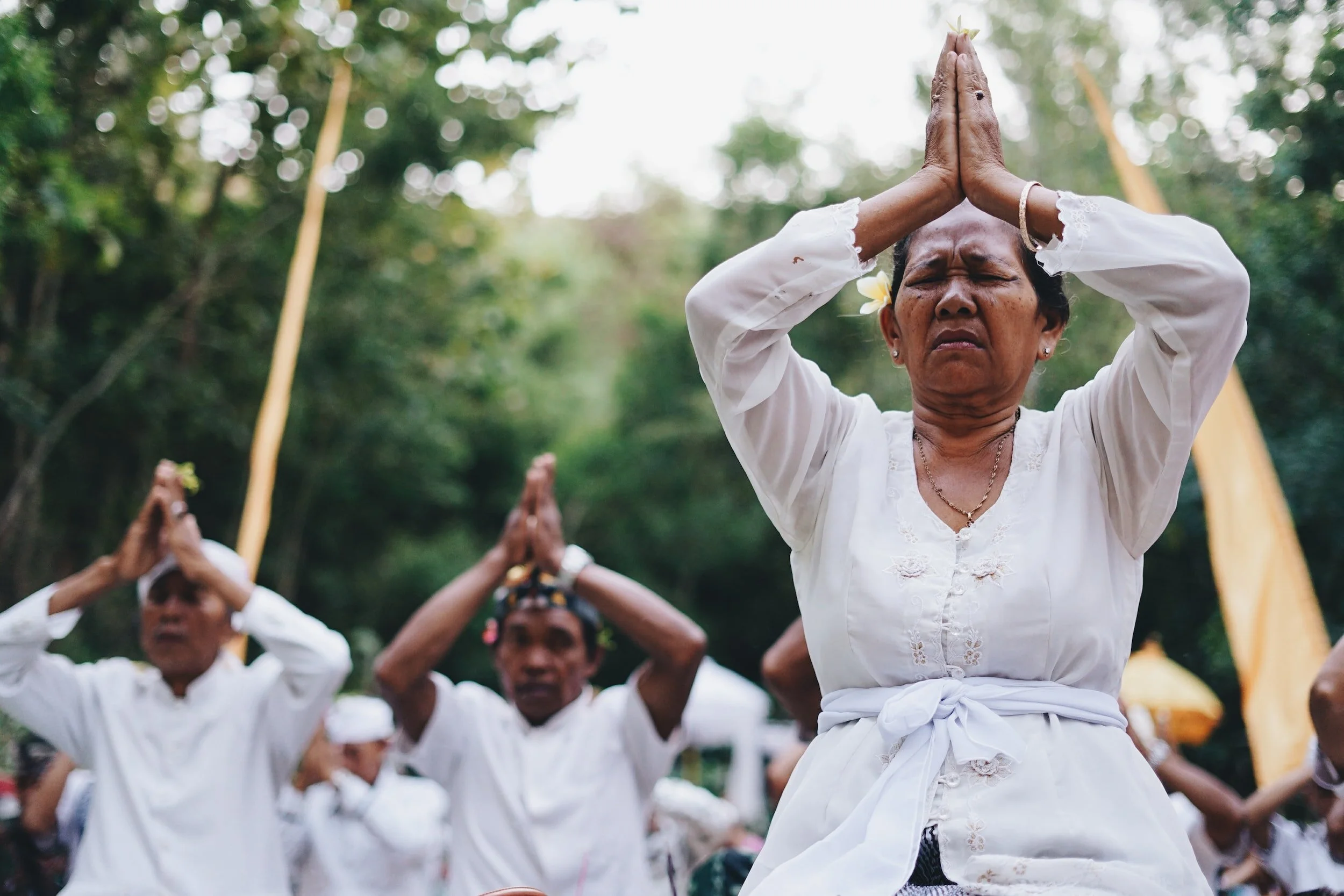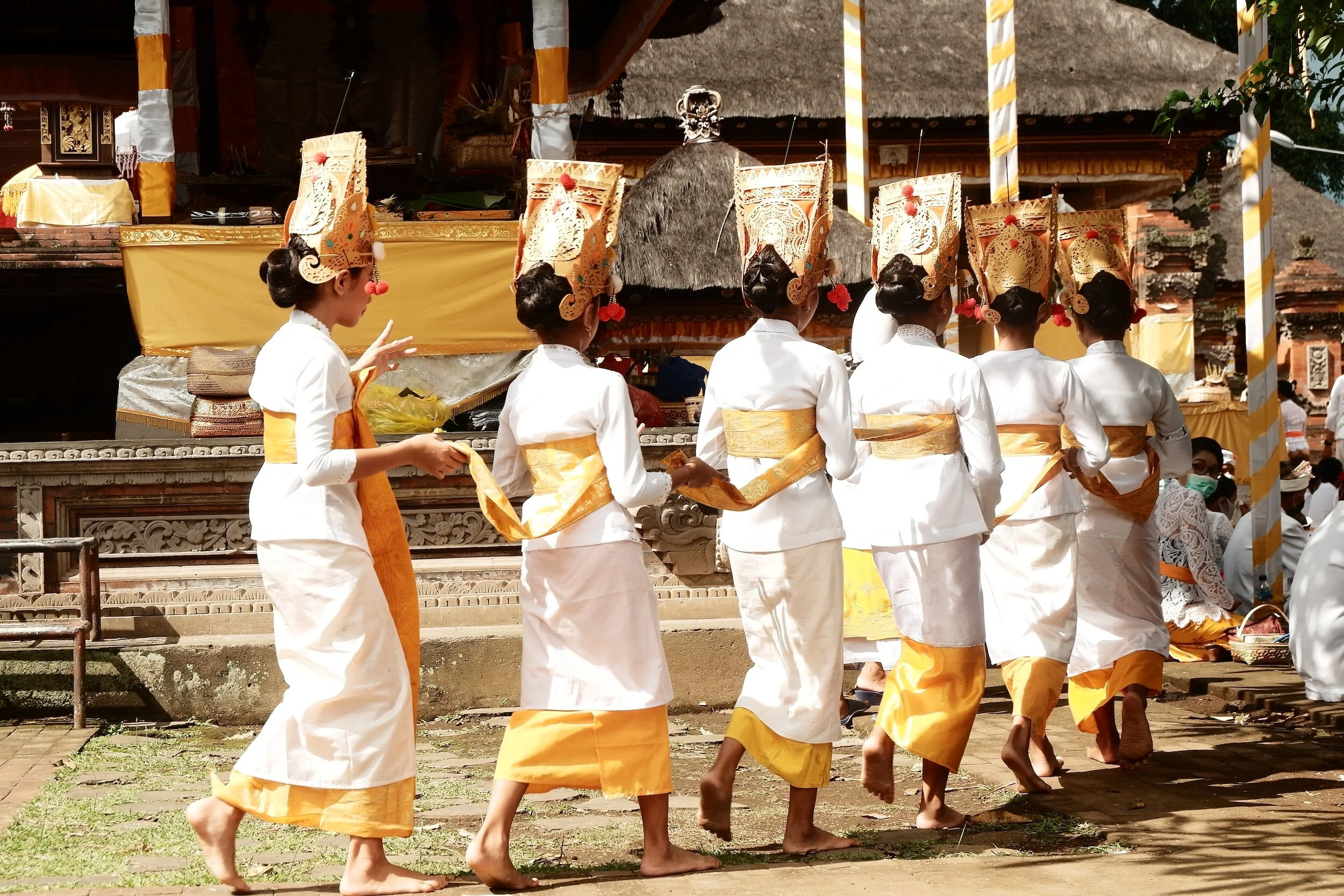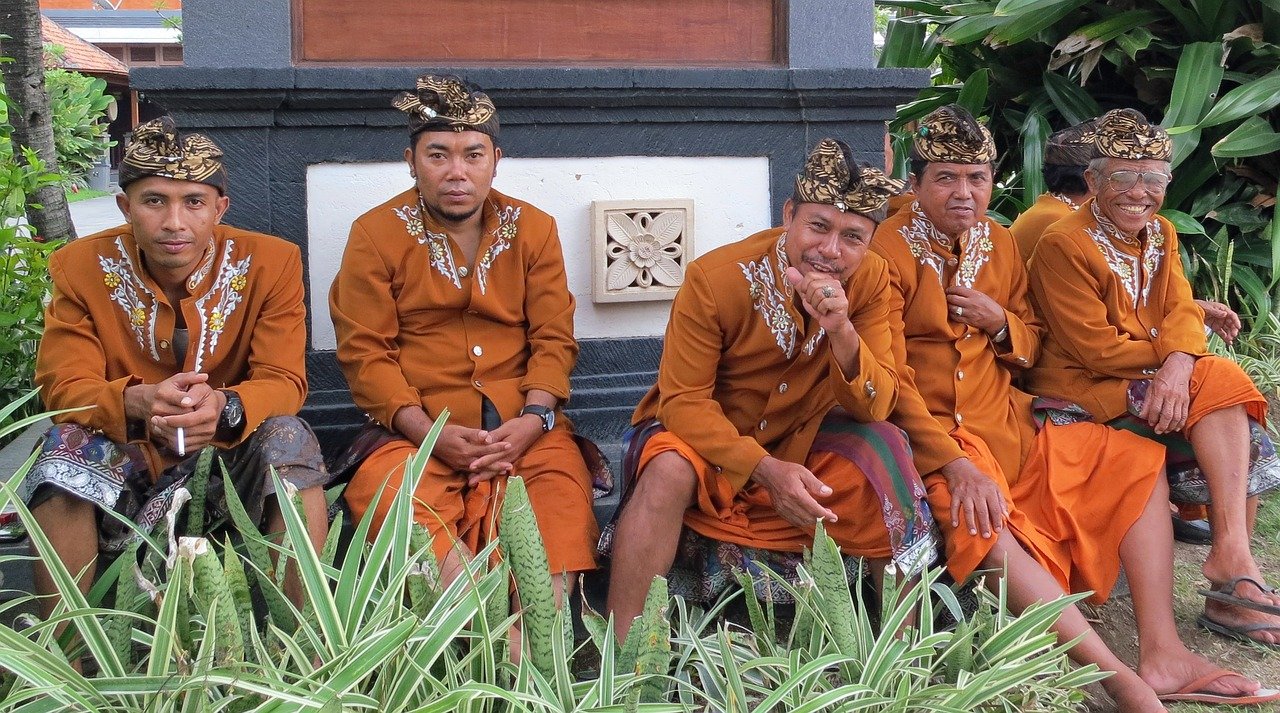Understanding the Odalan: A Vibrant Balinese Temple Festival
Every one of Bali’s 20,000 temples has a special ceremony, called ‘Odalan’ every 30 weeks of the Pawukon calendar.
Table of Contents Show
The Odalan ceremony
The island of Bali in Indonesia is not only famous for its stunning beaches and lush landscapes but also for its rich spiritual and cultural heritage. One of the most captivating aspects of Balinese Hinduism is the temple festivals, known as Odalans, which are vibrant celebrations held in honor of the temples' anniversaries.
These festivals are a unique opportunity for visitors to witness the deep devotion and exuberance of the Balinese people as they come together to pay homage to their gods and ancestors. In this comprehensive guide, we will explore the intricacies of the Odalan and offer insights into the rituals, traditions, and significance behind these mesmerizing celebrations.
The Essence of the Odalan
Weeks of preparation lead up to the 3-day Odalan held at each temple
The Odalan is an essential event in the Balinese calendar, as every temple on the island has its own scheduled celebration, usually lasting for three days. With over 20,000 temples in Bali, it's highly likely that visitors staying for more than a day or two will have the chance to witness one of these enchanting ceremonies. The temples are not just places of worship; they are the heart and soul of the Balinese community, serving as a focal point for religious and social activities. The Odalan is a time when the entire village comes together to honor the gods, seek blessings, and strengthen the bond of their community.
The Balinese Calendar Systems
To understand the scheduling of Odalans, it's important to grasp the Balinese calendar systems. The Balinese people follow three different calendars, including the standard Gregorian calendar, the lunar calendar (Saka), and the 210-day ceremonial cycle (Pawukon). While the Gregorian calendar is widely used internationally, the Odalans are typically determined by the lunar or Pawukon calendars. The lunar calendar marks the date by indicating the name of the lunar month and whether it falls on a full moon (Purnama) or a new moon (Tilem). On the other hand, the Pawukon calendar consists of 30 weeks, each lasting for seven days. Most Odalans adhere to the Pawukon calendar, making it challenging for visitors to pinpoint the exact date of a specific celebration. However, most Balinese households have their own calendars, making it easier to determine the Pawukon date of an Odalan.
The Multitude of Temples in Bali
Bali is renowned for its abundance of temples, and each village typically has at least three main temples: Pura Desa, Pura Puseh, and Pura Dalem. However, larger villages and towns often boast numerous other public temples, regional temples, irrigation societies' subak temples, neighborhood associations' banjar temples, and even individual house compounds with modest temples called sanggah. With an estimated 20,000 temples in Bali, the island is a treasure trove of spiritual sanctuaries. Each of these temples has its own Odalan, ranging in size from intimate family affairs to grand celebrations that attract worshippers from all corners of the island.
The Preparation: Building Anticipation
The preparations for an Odalan begin well in advance, with the entire community coming together to ensure the success of the festival. The magnitude of the preparations depends on the importance of the temple and the scale of the celebration. Typically, the preparations involve cleaning and decorating the temple, creating elaborate offerings, practicing traditional dances and music, and coordinating various ceremonial activities. The days leading up to the Odalan are a hive of activity, filled with excitement and anticipation for the imminent festivities.
Cleaning and Decorating the Temple
Before the Odalan, the temple is meticulously cleaned and adorned to create a sacred and inviting space for the gods and the community. The Balinese believe in the concept of Tri Hita Karana, which emphasizes the harmonious relationship between humans, gods, and nature. As such, cleanliness and aesthetic beauty play crucial roles in creating a harmonious atmosphere within the temple. The temple grounds are swept clean, and any debris or impurities are removed. Intricate decorations made from colorful fabrics, fresh flowers, and intricately woven coconut leaf offerings, known as penjors, are hung throughout the temple complex, adding a festive touch to the sacred space.
Crafting Elaborate Offerings
The elaborate floral offerings for a temple Odalan are a gift to the gods
Offerings, or banten, are an integral part of Balinese religious rituals, and the Odalan is no exception. The women of the village take on the responsibility of creating these elaborate and beautiful offerings, which are meticulously crafted to symbolize gratitude, respect, and devotion to the gods. The offerings often consist of towers of fruits, colored rice cakes, meats, and other delicacies. Square leaf baskets, called gebogan, are also filled with an array of multicolored flowers, creating a stunning visual display. These offerings are not only a means of expressing gratitude but also a way to invoke the blessings of the gods and ensure the well-being of the community.
Rehearsing Traditional Dances and Music
Traditional dances and music are an integral part of Balinese culture, and they hold a prominent place in the Odalan celebrations. In the days leading up to the festival, dancers and musicians gather to rehearse and perfect their performances. The intricate movements, vibrant costumes, and rhythmic melodies of the gamelan orchestra transport the participants and spectators into a world of enchantment. These practices are not only a way to showcase the artistic talents of the community but also a means of connecting with the divine through the expressions of movement and sound.
Coordinating Ceremonial Activities
The success of an Odalan relies on the coordination and participation of the entire community. Various ceremonial activities, such as processions, prayers, blessings, and traditional rituals, need careful planning and organization. Village leaders, priests, and temple committees work together to ensure that each aspect of the festival is carried out smoothly. Roles are assigned, schedules are prepared, and resources are gathered to create a seamless flow of events. The sense of unity and shared purpose among the community members is palpable during this time, as everyone comes together to honor their spiritual heritage.
The Day of the Odalan: A Feast for the Senses
Colourful processions, vibrant floral and food offerings and chanting are features of every temple Odalan
On the day of the Odalan, the atmosphere around the temple becomes charged with anticipation and excitement. Villagers, dressed in their finest traditional attire, start gathering in the temple vicinity, creating a vibrant tapestry of colors and textures. The air is filled with the sounds of the gamelan orchestra, the rhythmic beats of the gongs, and the echoes of prayers and chants. The tantalizing aromas of incense, sweet hair oils, and sizzling satay permeate the surroundings, while food sellers display their mouthwatering delicacies outside the temple gates.
Dressing Appropriately for the Occasion
When visiting a temple during an Odalan, it is important to dress respectfully and adhere to the Balinese customs. Shorts, bathing suits, and revealing clothing are not appropriate within the sacred space of the temple. Just as one would dress modestly when entering a church, temple, or mosque anywhere in the world, it is essential to show reverence and cultural sensitivity in Balinese places of worship. The Balinese people are extremely conscious of tourists' attire and consider it sacrilegious to enter a temple without a sash or scarf tied around the waist. By dressing appropriately, visitors show respect for the customs and traditions of the Balinese people.
The Procession and Entrance
As the Odalan festivities commence, a procession makes its way towards the temple. Villagers, dressed in their traditional attire, carry their beautifully crafted offerings on their heads, with frangipani or hibiscus blossoms adorning their hair. The rhythmic pounding of the kulkul, a hollow log drum, resonates through the air, summoning the gods and signaling the start of the ceremony. The entrance gate, adorned with the fierce face of Bhoma, the son of the earth, stands as a protective barrier against evil spirits. The elaborate decorations, colorful banners, and fluttering umbrellas create a festive atmosphere.
How to find an Odalan to attend
With over 20,000 temples all over Bali, you are sure to be able to experience an Odalan ceremony during your stay. The best way to find one is simply to ask at your hotel. They may be aware of a nearby temple having an odalan, or there is sure to be a member of staff whose village temple or family temple is having their odalan. They will be delighted that you asked them to visit.
How much should I donate to an Odalan ceremony?
In return, please consider making a donation to the temple or family whose Odalan you are visiting. Odalans are very expensive events to run and your gift is the most effective way to say thank you for the chance to experience an Odalan festival firsthand. Depending on how long you spend at the ceremony, a gift of Rp 100,000 (minimum) to Rp 1,000,000 (if you are invited to eat, pray, and get involved) is appropriate. These suggested amounts would apply whether you visit on your own, as a family or small group of friends.
Fascinated? You might also like to read about: The Significance of Offerings in Balinese Religion and Orientation and Its Significance to Balinese Spirituality
Frequently asked questions about the Odalan ceremony
What is the Odalan ceremony in Balinese religion?
The Odalan ceremony is a temple anniversary celebration that takes place every 210 days in Bali. It is a significant religious event that involves various rituals, offerings, and cultural performances.
What is the significance of the Odalan ceremony in Balinese religion?
The Odalan ceremony is a way for Balinese people to honor their ancestors, deities, and the temple itself. It is believed to bring blessings, prosperity, and spiritual harmony to the community.
How is the date of the Odalan ceremony determined?
The date of the Odalan ceremony is determined by the Balinese Pawukon calendar, which consists of 210 days. Each temple has its own Odalan date, which is based on the day the temple was consecrated.
What are some of the rituals and offerings involved in the Odalan ceremony?
The Odalan ceremony involves various rituals and offerings, such as the purification of temple effigies, the presentation of offerings to deities and ancestors, and the performance of traditional dances and music.
How do Balinese people prepare for the Odalan ceremony?
Balinese people prepare for the Odalan ceremony by cleaning and decorating the temple, making offerings, and practicing traditional dances and music.
What is the role of the priest in the Odalan ceremony?
The priest plays a crucial role in the Odalan ceremony, leading the rituals, offering blessings, and guiding the community in their spiritual practices.
How does the Odalan ceremony reflect the Balinese philosophy of Tri Hita Karana?
The Odalan ceremony reflects the Balinese philosophy of Tri Hita Karana by emphasizing the harmony between humans, nature, and the divine. It is a way for Balinese people to maintain balance and spiritual harmony within their community.
What is the significance of cultural performances in the Odalan ceremony?
Cultural performances, such as traditional dances and music, are an integral part of the Odalan ceremony. They showcase Balinese cultural heritage and provide entertainment for the community.
How does the Odalan ceremony contribute to the social fabric of the Balinese community?
The Odalan ceremony serves as a significant social event, bringing the community together. It provides an opportunity for people to connect, share stories, and strengthen social bonds. It fosters a sense of unity and belonging among the Balinese people.
Are there any specific customs or practices associated with the Odalan ceremony?
Yes, there are specific customs and practices associated with the Odalan ceremony. These may include processions, traditional dances, music performances, the lighting of oil lamps, and the preparation of elaborate offerings. Each temple may have its own unique customs and practices that are followed during the Odalan ceremony.
How does the Odalan ceremony contribute to the preservation of Balinese cultural heritage?
The Odalan ceremony is an important occasion for showcasing and preserving Balinese cultural heritage. It provides a platform for traditional arts, music, dance, and costumes to be displayed and passed down through generations. It helps to ensure the continuity of Balinese customs and traditions.
Are there any specific roles or responsibilities assigned to community members during the Odalan ceremony?
Yes, community members often have specific roles and responsibilities during the Odalan ceremony. This may include organizing the event, preparing offerings, participating in rituals, performing traditional dances or music, and assisting the priest in various tasks. These roles help to engage and involve the entire community in the ceremony.
How does the Odalan ceremony contribute to the spiritual well-being of the Balinese people?
The Odalan ceremony is considered a sacred and spiritually significant event. It provides an opportunity for individuals to connect with their faith, seek blessings, and express gratitude to the deities and ancestors. It is believed to bring spiritual purification, protection, and overall well-being to the Balinese people.
Are there any specific taboos or restrictions associated with the Odalan ceremony?
Yes, there may be certain taboos or restrictions associated with the Odalan ceremony. These can vary depending on the temple and local customs. Common taboos may include refraining from wearing black or engaging in negative behavior during the ceremony. It is important to respect and adhere to these cultural norms during the event.























Bali's remarkable rice terraces draw numerous tourists. However, could tourism pose a threat that the age-old Subak system might struggle to overcome?